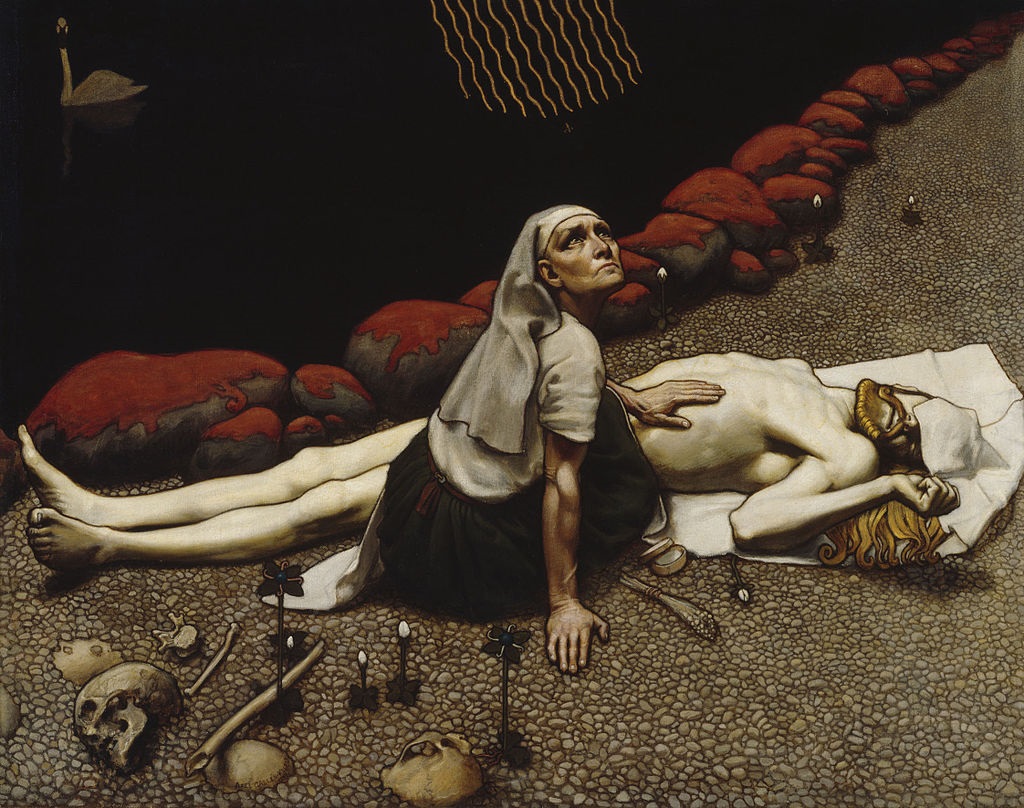It's official: if you want to be guaranteed an infallible musical adrenalin boost in London, you can always be sure to find it with Finnish conductor Sakari Oramo and his BBC Symphony Orchestra. And it's not just a question of splashy excitement: Oramo is a rigorous rehearser. Detlev Glanert's fiendish new tone poem Megaris would not have been half as vivid or pleasurable without extraordinary preparation. As for Nielsen and Sibelius, there is no conductor in the world I'd rather hear today in their music than Oramo.
This was a concert of journeys, sea-girt in the first half, with plenty of dancing along the way. Nielsen's Rhapsodic Overture "A Fantasy Journey to the Faroe Islands" is an odd one (which of his works isn't, in a good way?). Occasional it may have been, composed for Danish concerts in 1927, for which 50 Faroese visitors had been asked to sing national songs. One of those, possibly better known in its four-hand treatment by Grainger as "Let's dance gay in green meadow", makes a riotous conclusion, not so much rollicking in Oramo's headlong interpretation as demonic, an island invasion of a terrifying sort. The opening seascape is far from "public" music, a poetic response parallel to Nielsen's Helios Overture which would have made just as good a starter.
In fact that might have linked even better, mythically speaking, to Glanert's spellbinding legend. Megaris has a subtitle even more elaborate than Nielsen's - Seascape: Siren's Last Lament for orchestra and vocalising chorus. It's the ghost of Parthenope, the siren driven to her death by Odysseus's resistance to her song (a Roman mosaic of the episode pictured below) and washed up by a rock in the bay of Naples, that we hear in an offstage soprano voice. The chorus takes up her inarticulate sounds; this was a gift to the BBC Singers to mesh with their companion orchestra. Megaris has an almost old-fashioned tone-poem format, three threnodies punctuated by two dance-rhapsodies. But what brilliance in those frenzied bacchanals - part Strauss Salome's Dance, part Ravel Daphnis and Chloé when the voices join in, with a bluesy theme close to the jazz riff in Milhaud's La Création du monde. I was waiting, in all the iridescent textures, for a sound as original as Nielsen's seagull cry on the E flat clarinet, and we got it in the weird ricocheting of first and second violins, either side of the conductor.
The chorus takes up her inarticulate sounds; this was a gift to the BBC Singers to mesh with their companion orchestra. Megaris has an almost old-fashioned tone-poem format, three threnodies punctuated by two dance-rhapsodies. But what brilliance in those frenzied bacchanals - part Strauss Salome's Dance, part Ravel Daphnis and Chloé when the voices join in, with a bluesy theme close to the jazz riff in Milhaud's La Création du monde. I was waiting, in all the iridescent textures, for a sound as original as Nielsen's seagull cry on the E flat clarinet, and we got it in the weird ricocheting of first and second violins, either side of the conductor.
Megaris would be a great candidate for choreography, and by the same token it's surprising that Oramo doesn't conduct more ballet and opera. His gestural definition reached its zenith in Sibelius's Four Lemminkäinen Legends - an early work from the mid-1890s, taking a hero from the Finnish epic as its subject like the Kullervo Symphony before it. But all Sibelius is here, sometimes in rough-hewn form, sometimes in as sophisticated a guise as anything he composed (the amazing "Swan of Tuonela", with its aching cor anglais solo taken to perfection by Alison Teale and poetic solo-cello refrains from Susan Monks, teased out in the cadencing by Oramo). The blast of horns at the start - a chord Sibelius would re-use in the original version of his Fifth Symphony - and the gutsy string drone for the courtship dances of "Lemminkäinen and the Maidens of Saari" - told us we were in for an earthy hero's life. The long, hyper-Tristanish love theme was timed to peak just right, like the evil swells of "Lemminkäinen in Tuonela" (pictured above: Akseli Gallen-Kallela's depiction of Lemminkäinen's mother with his body by the waters of Tuonela).
The blast of horns at the start - a chord Sibelius would re-use in the original version of his Fifth Symphony - and the gutsy string drone for the courtship dances of "Lemminkäinen and the Maidens of Saari" - told us we were in for an earthy hero's life. The long, hyper-Tristanish love theme was timed to peak just right, like the evil swells of "Lemminkäinen in Tuonela" (pictured above: Akseli Gallen-Kallela's depiction of Lemminkäinen's mother with his body by the waters of Tuonela).
The Barbican is too amplifying and constricted a space for everything that Oramo wanted to project; the air of the Birmingham hall would have done wonders. But there's no denying that the orchestra played its heart and soul out for Oramo, as they always seem to do these days (I've never heard any of the players have a less than enthusiastic word for their Chief Conductor). The final homecoming of Lemminkäinen, his body pieced together by his dear old mum, was predictably thrilling. Placed between his bracing Nielsen cycle and the Sibelius symphonies to come, this concert could not have been a better advertisement for the blazing-saddles partnership of Oramo and his orchestra.














Add comment